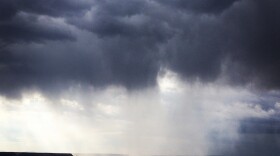This year the nation marks the 50th anniversary of the Wild and Scenic Rivers Act. The law now protects almost 13,000 miles of the most remote and pristine waterways in the U.S.
The federal legislation was passed in 1968 to counterbalance decades of dam building. It allows Congress to set aside special stretches of rivers for their scenery, geology, ecology or history.
One of those is the Virgin River in southwest Utah and its maze of tributaries—with names like Mystery Canyon, Echo Canyon and Deep Creek. Long galleries of cottonwood trees line the riverbanks, snowing the sky with seeds in spring and early summer when the river floods. Bighorn sheep come down to the water to bear their lambs, and migratory birds stop beneath the world’s tallest sandstone cliffs.
Some plants and animals here live nowhere else. The rare Zion snail makes its home in “hanging gardens” of flowers and ferns growing out of seeps on cliff faces. And a silvery minnow called the Virgin spinedace darts through the water to snap up insects.
Nearly 170 miles of the Virgin watershed were named a Wild and Scenic River in 2009. That means the federal government is not to take any action that would harm its character as a free-flowing river.
A few sections of the river are accessible by road, but most of the protected waterways can be reached only on foot. Hikers can explore the narrow canyons and twisting creeks, mindful that this place is a remnant of a river unchecked by dams.








